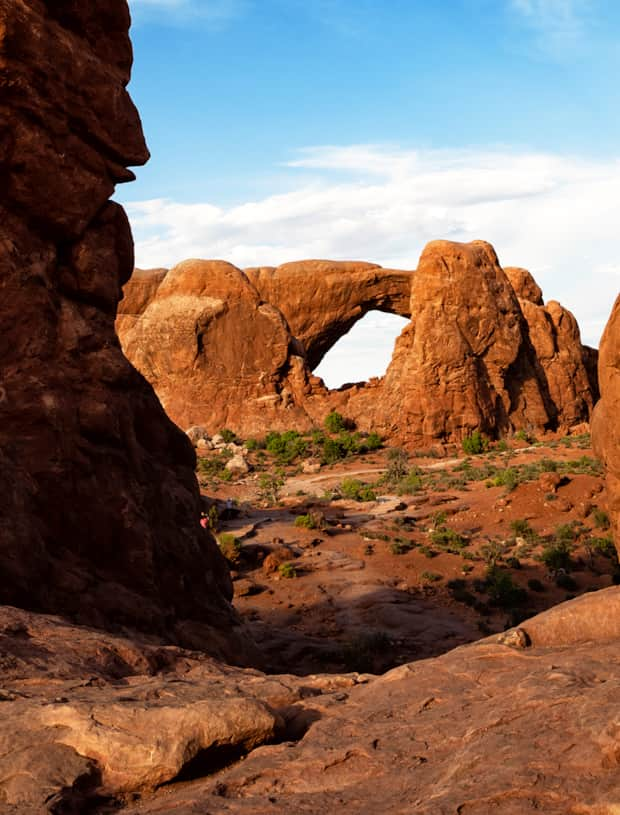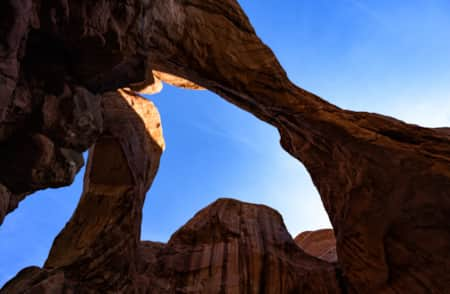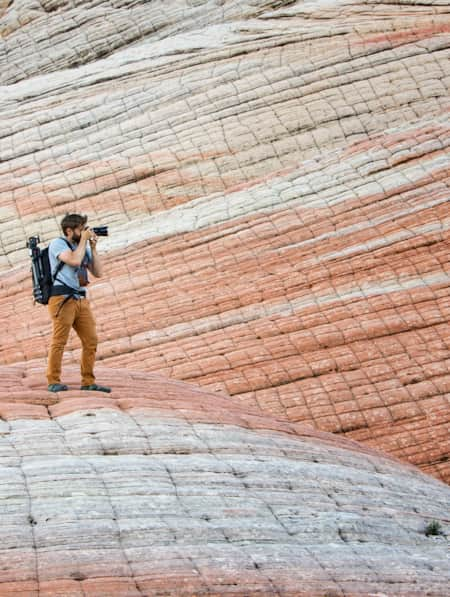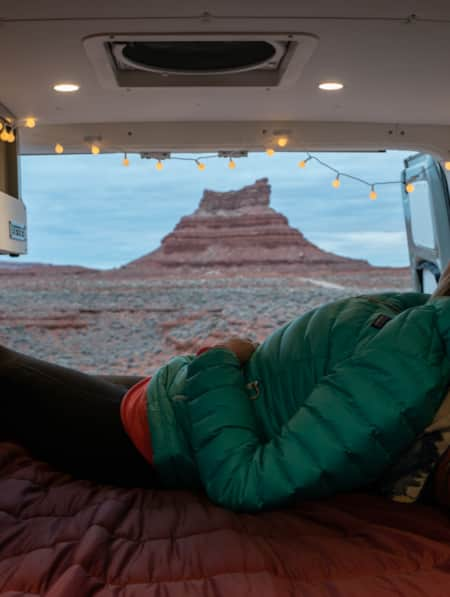Do Your Research
-
Check the Weather
Be sure to read the weather forecast and understand how the climate and conditions will impact your day’s outing and be aware of your own limits. Pack accordingly and be sure to bring enough water, food, proper clothing and sun protection.
-
Get the Latest Information
Check the current regulations and suggested guidelines for the places you intend to visit. For the latest information, visitors may follow Arches National Park on Twitter and Facebook or check nps.gov for the latest park alerts and conditions.
-
Make a Plan
Create a trip plan and make sure someone knows where you are going and when you will return. Don’t expect cell phone service to work, having a printed map is always helpful. Be aware of potential hazards, including wildlife, lightning, flash floods and extreme heat. Assess your abilities, goals and skills and make sure your planned activities are a good match. Reach out to a park ranger if you’re unsure.

Devil's Garden in Arches National Park during afternoon peak visitation hours.
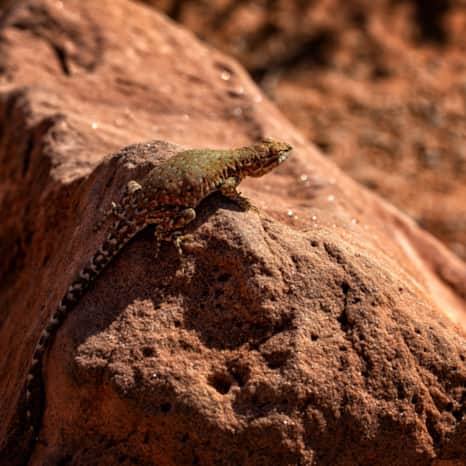
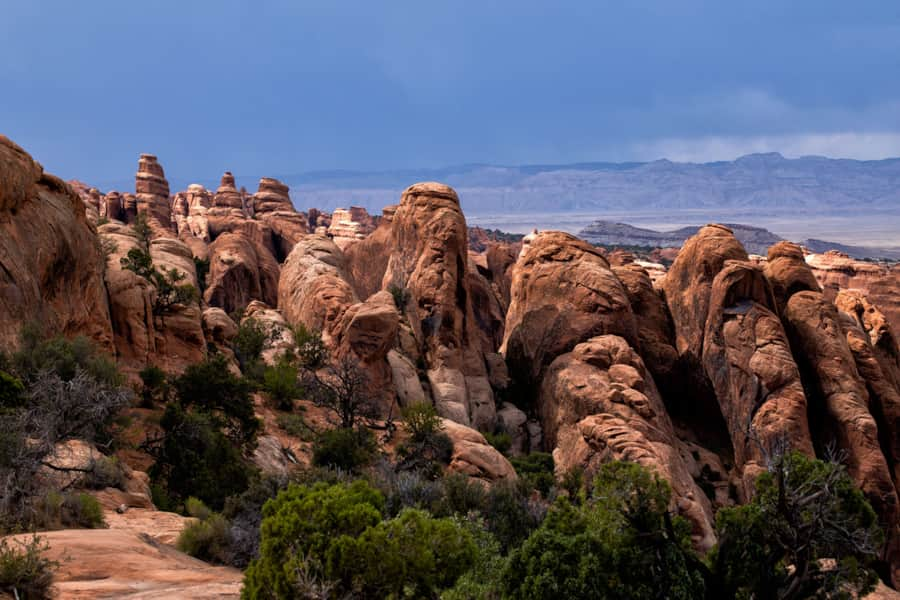
Visit With Respect
The red rock desert is a fragile ecosystem, and visitors should take special care to protect it. Practice Leave No Trace principles to ensure that all parts of the park are left as nature intended.
- Pack out everything you bring with you, including food wrappers, tissues and even crumbs. Arches requires visitors to pack out solid human waste, toilet paper and hygiene items. (Read: "How to Poop in the Outdoors")
- Stay on existing trails and do not travel off course or “bust the crust.” A single footstep can cause damage that lasts for decades. Rock cairns, or rock piles, are trail markers. Do not disturb them or add new ones, as they could mislead other hikers.
- Treat the arches and other geologic features with respect, both to protect them and for your safety. Walking, climbing and scrambling on arches — even for a quick photo — is not permitted.
- Leave rocks, plants, animals and natural objects as you found them. Never leave marks or scratches on rocks or other surfaces and admire artifacts and natural features from a distance without touching or disturbing. Tree carvings, rock etchings and spray painting are forms of vandalism and graffiti, which are illegal on public lands.
- Respect the wildlife that make Arches National Park their home. Keep your distance, and if an animal changes its behavior due to your presence, you are too close. Secure your food so animals cannot access it, and never feed wildlife.
- Camp only in designated areas on durable surfaces and follow all campfire rules and regulations.
- Leave drones and pets at home. The use of off-highway vehicles (ATVs, OHV, UTVs, etc.) is also not allowed in Arches National Park.
- Be courteous to other visitors by minimizing noise, yielding to others on trails and respecting trail and transportation signage.
- Show consideration for other visitors, and be a mindful photographer. Arches is an internationally-certified Dark Sky Park, making it a prime location for night photography or stargazing (Panorama Point and the Windows Section are great spots for evening views). Do note that using artificial light sources to illuminate park features for photography is not permitted.

The red rock desert of Arches National Park is a fragile ecosystem, and visitors should take special care to protect it.
Photo: Angie Payne
"This wondrous landscape has evolved over 300 million years, and as visitors, it is our responsibility to protect this cherished land for future generations."
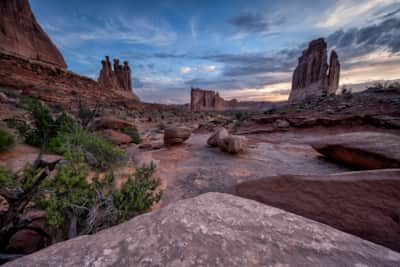
Take Care of Yourself
Take care of yourself and your companions by planning ahead and knowing what to expect on your visit to Arches.
Prepare for the Heat
Southeastern Utah gets hot in the summer, and daytime temperatures can exceed 100°F. Avoid exertion or overheating during the peak temperatures of the day. Consider hiking in the cool of the mornings and evenings. There is very little shade on most trails within the park. Protect yourself with sunscreen, sunglasses, a hat and protective clothing.
Stay Hydrated
Heat and dry desert air can quickly lead to dehydration. Bring a minimum of one gallon of water per person per day, and remember to drink it. You can top up your refillable water container at the visitor center or Devil’s Garden parking area.
Pack Your Essentials
Bring plenty of water, food, navigational equipment (including a map) and all the gear you will need (including sun protection, sturdy footwear, layers of clothing, and a first aid kit) to be self-sufficient. People get into trouble and require rescue each year even on popular trails like Devils Garden and Delicate Arch. Food is not available in the park, so bring what you’ll need.
Start Planning
-

Arches National Park
Arches National Park contains more than 2,000 natural arches—the greatest concentration in the country. Find places to stay, itineraries, reservation info and weather for Arches, Moab and Canyonlands National Park.
-

Arches National Park Camping
An otherworldly landscape of stunning red sandstone provides the perfect backdrop for a camping adventure.
-

Arches National Park Hikes
Arches National Park is one of the most popular hiking destinations in Southern Utah. Start planning your hiking trip with these trails!
-

Things To Do In Arches National Park
Arches National Park is a vast playground for the adventurous, where everyone can find an unforgettable experience.
-

Winter in Arches National Park
Skip the crowded peak season and embrace the quiet of a winter visit to Arches National Park. Enjoy winter hikes, scenic drives and some of the best stargazing in the world.
